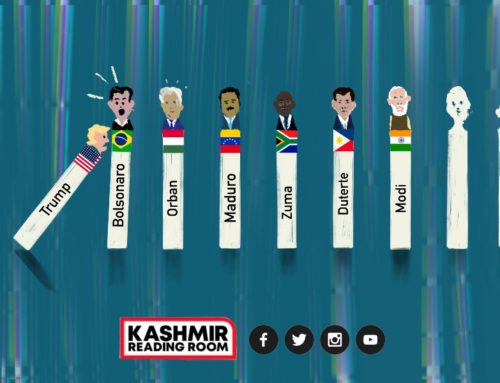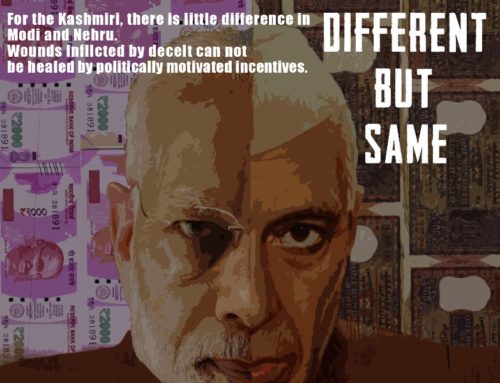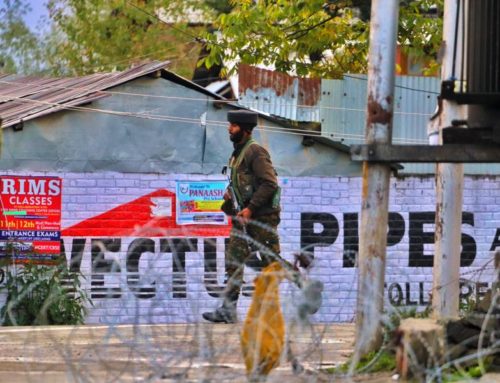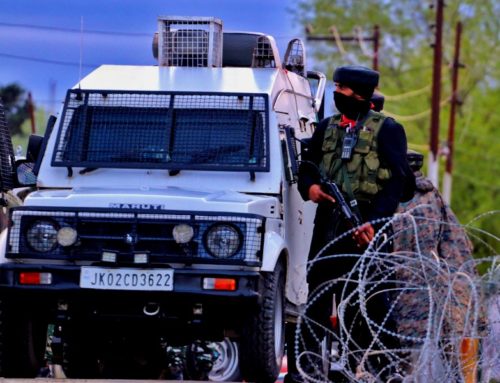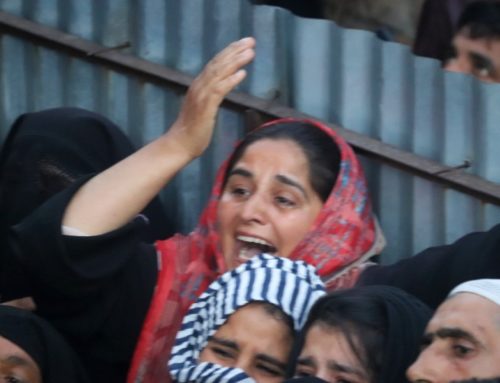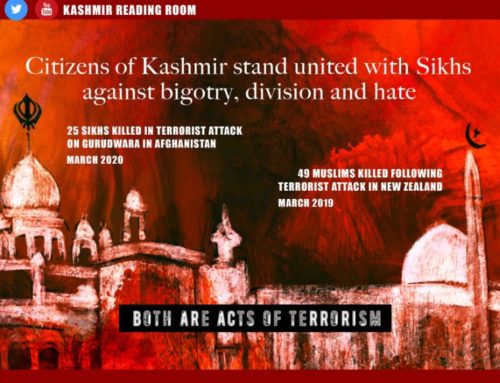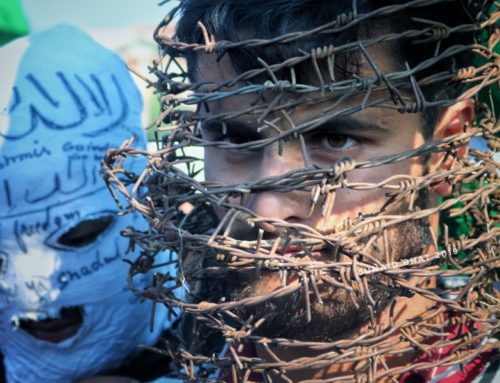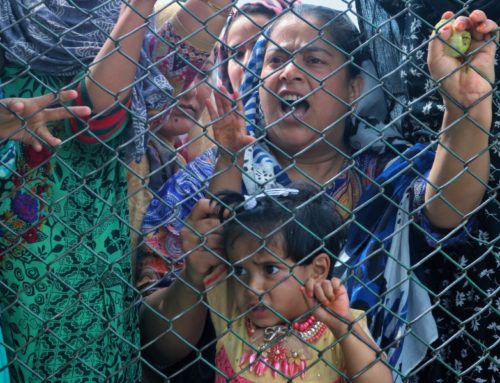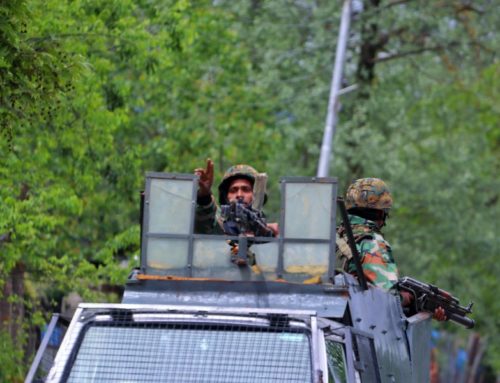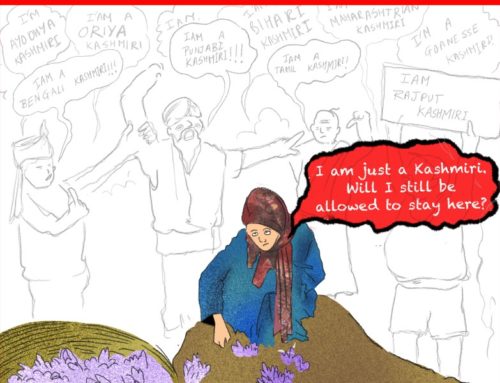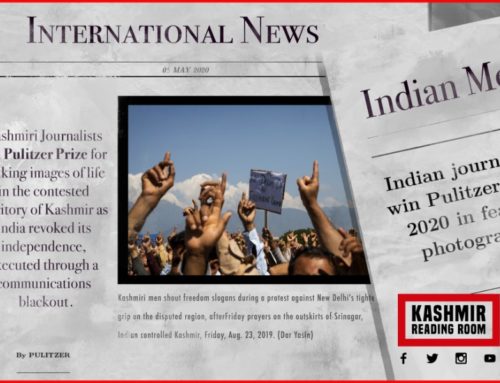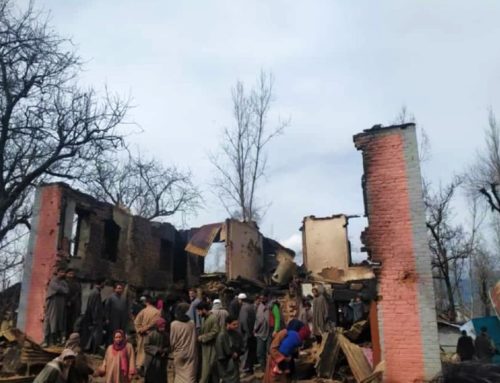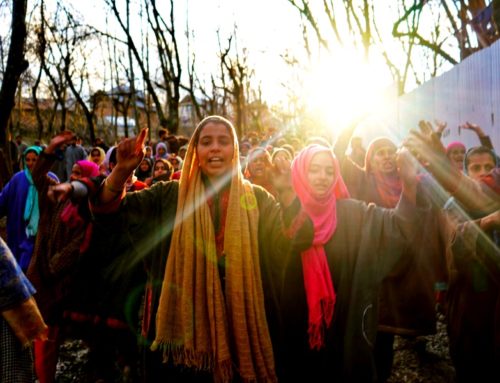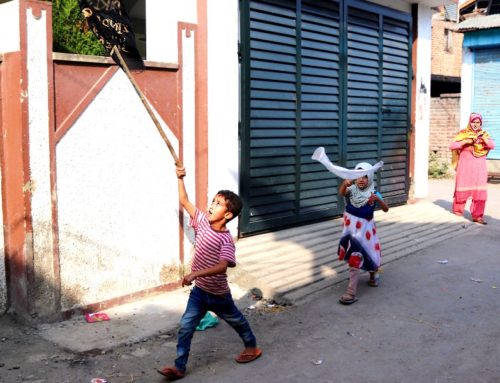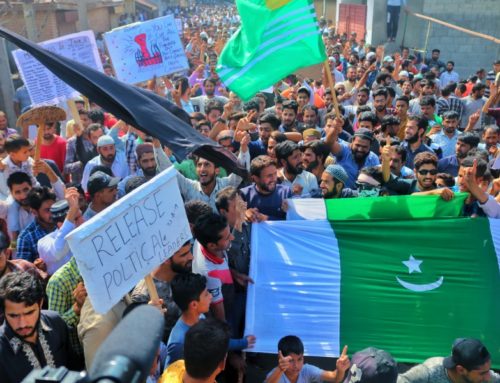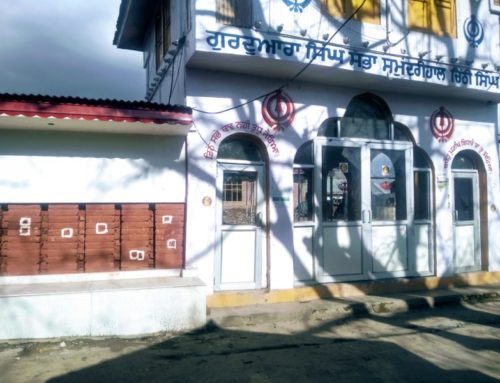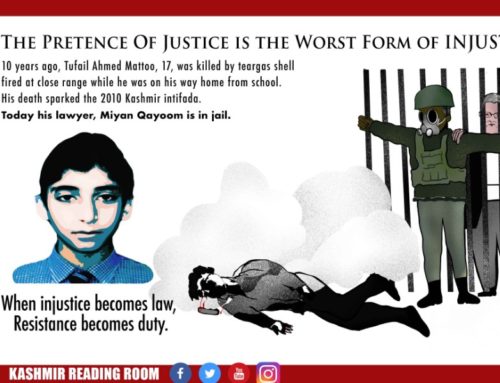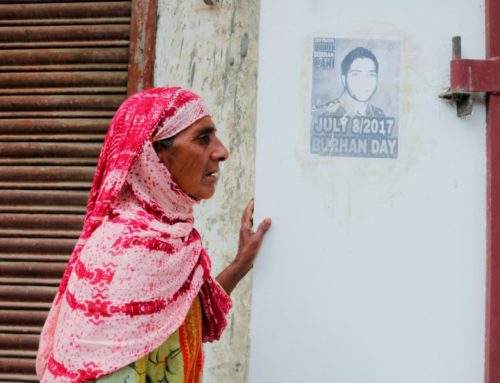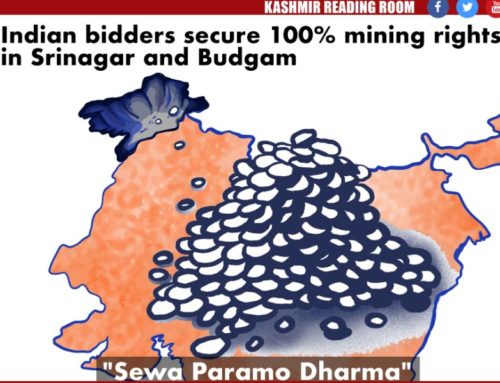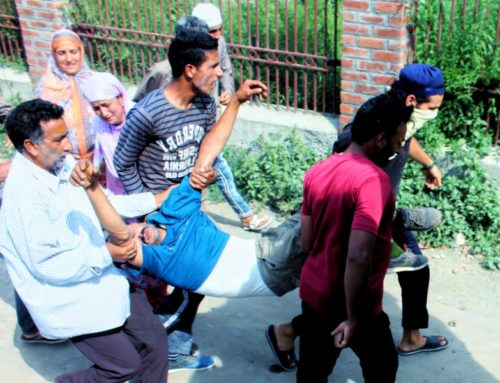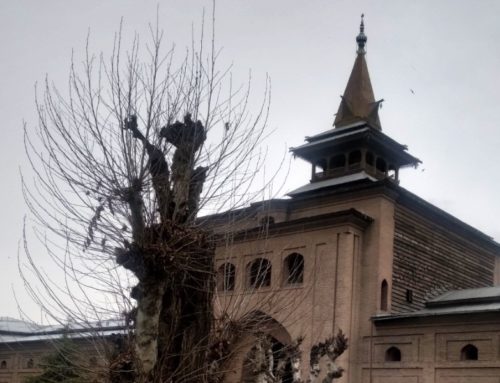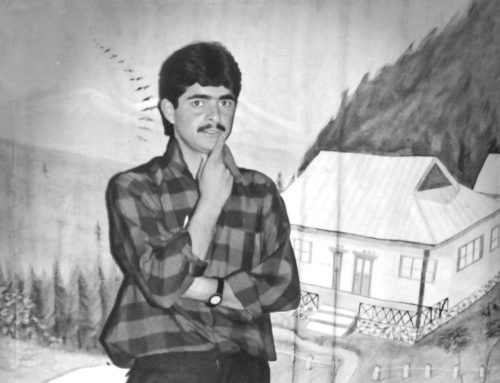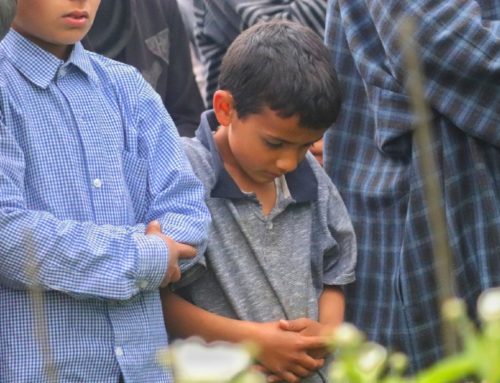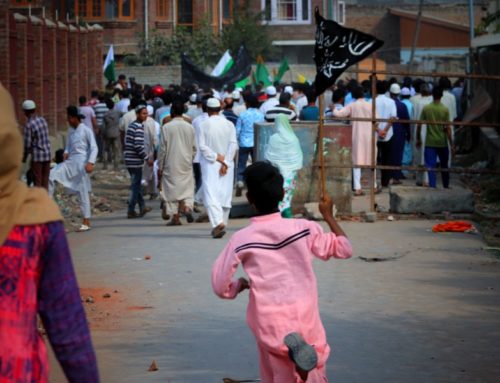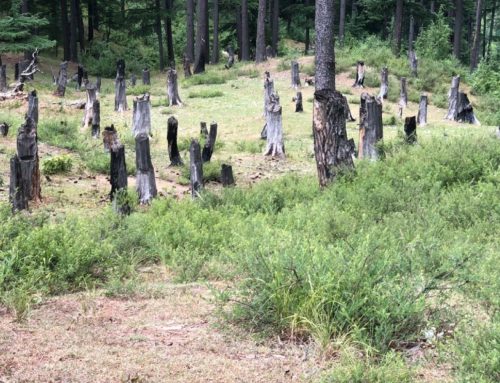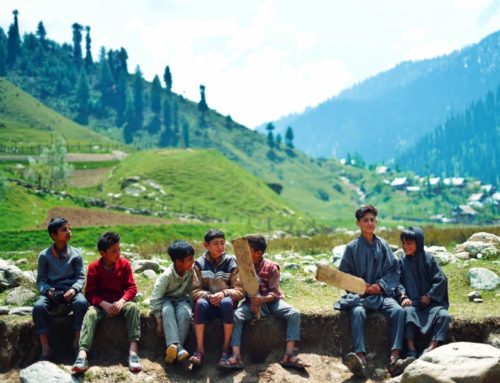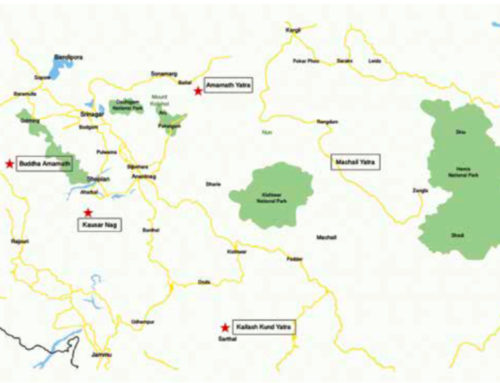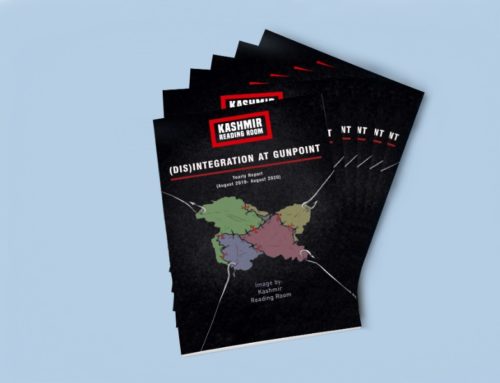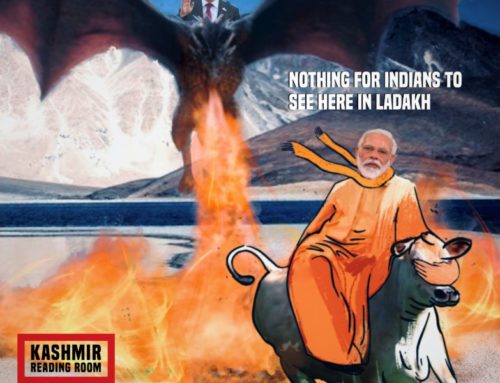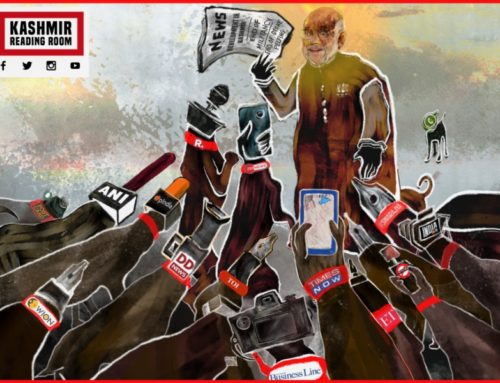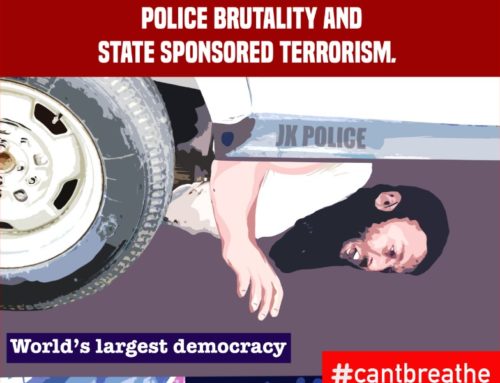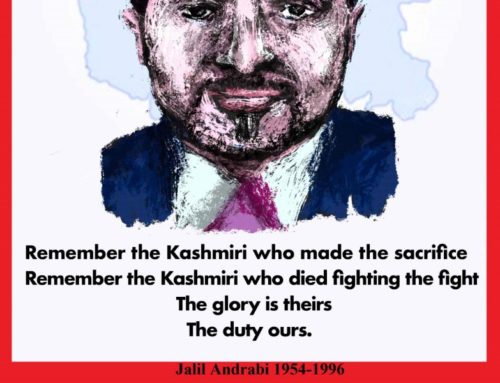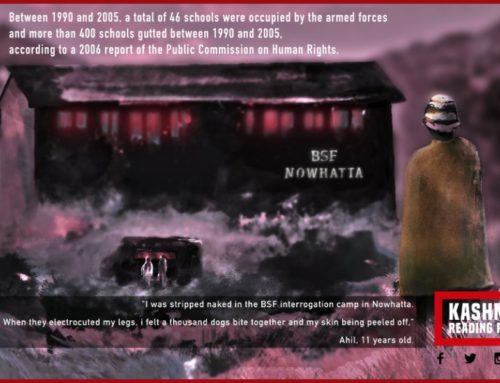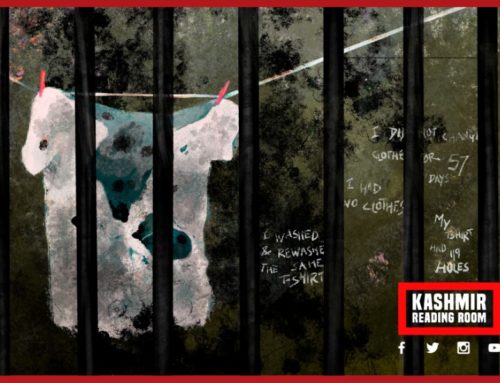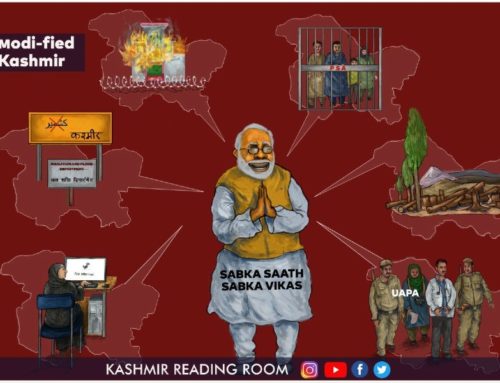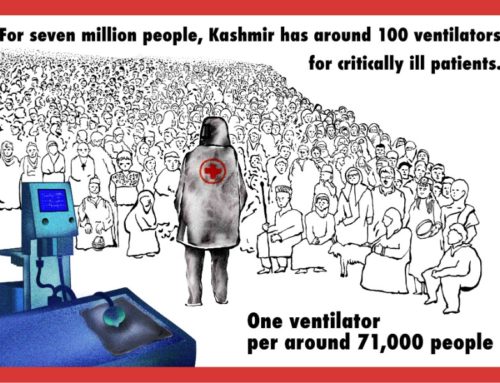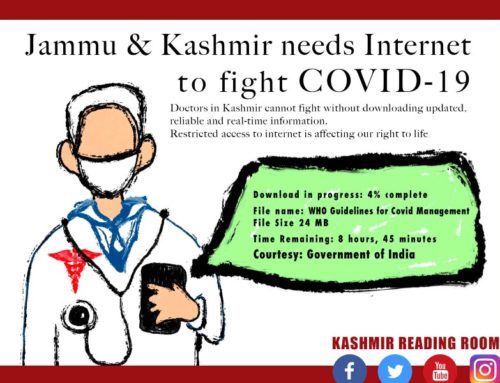Hindu Rashtra’s Propaganda on J&K
Sandhya Gokhale
After the amendment of Article 370 and 35 A, and abrogation of autonomy in Jammu & Kashmir (J&K), Prime Minister Modi addressed the nation on August 8, 2020. He laid down the rationale behind the abrogation in a 40-minute-long address. However, it comes as no surprise that this speech was yet another version of ‘Emperor’s new clothes’. Prime Minister Modi started his address saying that the biggest hurdle in development and wellbeing of people of Jammu, Kashmir and Ladakh had been removed with the amendment of Article 370. He added that the dreams of Sardar Vallabhbhai Patel, B.R. Ambedkar and Shyama Prasad Mookerjee had been fulfilled. He also alleged that Article 370 did not benefit the people of Kashmir in any manner, except promoting separatism, corruption, terrorism and family rule, adding that this (Article 370) was being used as a tool by Pakistan and that 42,000 innocent people had been killed. This characterization reiterates that providing outright false information and providing opaque governance has been one of the biggest achievements of the Modi government.
Dismantling state propaganda on J&K
J&K has the unique distinction of having introduced land reforms of considerable magnitude including remission of land revenue on smallholdings. A start was made in 1948 with the promulgation of the Big Landed Estate Abolition Act, 1950, whereby 4.5 lakh acres of land held over 22.75 acres (excluding orchards) were expropriated from as many as 9000 large landowners. From this ownership rights of over 2.31 lakh acres of land was transferred to cultivating peasants. Transferring land without compensation to big landlords was possible due to Article 370, since the provisions of the Constitution of India, concerning compensation at market value did not yet apply in the state.
The impact of land reforms gets reflected in the 2011 census. While India has 26.5% landless workers, Kashmir has only 6.6%. The percentage of people below the poverty line also reflects the impact. In 2004, while India had 27.5 % of people below the poverty line, in Kashmir this percentage was a mere 5.4 %. Decades of militarization resulting in lack of freedom of movement and shrinking livelihood options has led to an increase in people below the poverty line in Kashmir. Despite that the figures are nowhere near the Indian reality. 2011-12 figures show that India has 21.92 % population below the poverty line whereas Kashmir has 10.32%.
The Prime Minister also spoke about how the Kashmiri women will now get the same rights, as women in India, since Article 370 will no longer obstruct them. He surely needs to look at the census data, to apprise himself of the status of women in India, in contrast to the situation in J&K. In India, nearly 150 child marriages take place every hour and almost 3,603 take place per day. 30% of Hindus and Muslims in India engage in child marriages as compared to 16% in Kashmir.
India reports the highest number of dowry deaths at 8,391 (reported in 2010), which translates to 1.4 deaths per 100,000 women. Pakistan reports 2,000 dowry deaths per year translating into 2.45 per 100,000 women. In Kashmir the number is merely 0.1%. Shockingly, the recorded rate of cruelty by husbands in India is at 20.5%, whereas in Kashmir it is at 8%. The number of women separated/deserted, without divorce, in India is nearly 1%, whereas in Kashmir it was 0.18% in 2001 and it was 0.08% in 2016.
Ambedkar and Patel on Kashmir
Falsifying facts and history are not a new venture for India’s Prime Minister. Interestingly, he spoke of Dr Ambedkar or Sardar Patel’s opposition to article 370. In fact, Dr. Ambedkar advocated plebiscite in Kashmir Valley. He was also concerned about the situation of Hindu and Buddhist populations of Jammu and Ladakh. In an interview given on, October 27, 1951, available in BAWS Vol 17(2), he stated: “I fear that a plebiscite in Jammu and Kashmir may go against India. To save Hindu and Buddhist populations of Jammu and Ladakh from going to Pakistan, in such an eventuality, there should be zonal plebiscite in Jammu, Ladakh, and Kashmir.” There are no less than 17 volumes published of Ambedkar’s writings and speeches, and his opposition to article 370 is not found in any one of them.
Sardar Vallabhbhai Patel was the Home Minister of India and was responsible for the accession of nearly 554 princely states to India. He was even agreeable to part with Kashmir if Pakistan gave up its claim to Hyderabad. In a speech at the Bahauddin College in Junagadh, after its accession but before the accession of Hyderabad, Sardar Patel is quoted as:
“If Hyderabad does not see the writing on the wall, it goes the way Junagadh has gone. Pakistan attempted to set off Kashmir against Junagadh. When we raised the question of settlement in a democratic way, they (Pakistan) at once told us that they would consider it if we applied that policy to Kashmir. Our reply was that we would agree to Kashmir if they agreed to Hyderabad.”
Sardar Patel was a part of the five-months-long discussion which finally culminated in Article 370 in 1950. It was only Shyama Prasad Mukherjee, founder of Jana Sangh, the earlier avatar of BJP, who had been opposed to autonomy for Kashmir right from 1947. In 1952, along with Praja Parishad, Hindu Mahasabha, and Ram Rajya Parishad he coordinated many protests in Jammu and Delhi. From 1949, the Rashtriya Swayamsevak Sangh (RSS), which the ruling party shares its cultural and ideological links with, has been advocating Akhand Bharat as Hindu Rashtra and taking complete control of the only Muslim majority state is just one important step in the fulfillment of their dream of Hindu Rashtra.
Invocation of Pakistan
In a televised debate between a Congress’ leader and BJP’s Sudhanshu Trivedi, the BJP leader was asked to speak for two minutes without mentioning Pakistan, Islam, terrorism etc. In his excitement, the show host started a timer, but it came as no surprise that Sudhanshu lost the challenge within 30 seconds. While this was great for comedic relief, it is emblematic of the strategy of BJP to invoke Pakistan at every question as a circular strategy. To deflect us from asking about failures of governance, they invoke Kashmir and as we begin to wonder about Kashmir, they invoke Pakistan.
PM Modi has claimed that Article 370 is used as a tool by Pakistan, has no factual basis at all. The failure of the ‘secular state’ which systematically eroded Article 370 and subverted the democratic processes in order to establish Delhi’s control over Kashmir, right from 1953, has been the root cause of resistance in Kashmir Valley. The 42000 innocent persons killed are the result of militarization foisted on the people of Kashmir, to curb their resistance, further subverting any traces of democracy. Pakistan may have fueled the militancy but was not the root cause.
Plebiscite and the choice of Rulers
The ‘secular’ credential of India is questioned when one compares the way India handled the accession of Junagarh, a Hindu majority state and J&K, a Muslim majority state. Junagarh was afforded the opportunity to decide their political fate with India through a plebiscite, whereas it remains as an unfulfilled promise for J&K. There is a need to peek into history, to understand the deceit and violation of rights faced by Kashmiri people over several decades.
For centuries, Kashmiris did not have the freedom to choose their rulers. Kashmir has been ruled by Mughals, Afghans and Sikh in the past. Thereafter in 1846, rule of the ‘Hindu State’, under the Dogra King, was established as he bought the region of J&K from the Britishers. The Dogra Hindu State provided the Kashmiri Pandits (the dominant Hindu Caste in Kashmir then) with land resources, as well as important positions in the administration and revenue department. The Muslim subjects were not only deprived of religious freedom but also property rights, education, were taxed excessively and forced into unpaid labour.

Before accession to India, there were reports from Jammu of the systematic extermination of lakhs of Muslims by the Dogra army. Post-partition, Jammu, which was a Muslim majority area became a Hindu majority area. This reality added to the insecurity felt by people in J&K.
Ironically, the rising communal tensions in India post-partition prompted the first drastic action against the democratically elected Prime Minister of Kashmir. Sheikh Abdulla, who was not only dismissed, replaced by a pliant Ghulam Bakshi but also placed under arrest in August 1953. He was detained for eleven years, under false charges of ‘Kashmir Conspiracy’ which were never proved. This became a pattern where the Indian state used various means, including rigged elections, governor’s rule to keep complete control over the Kashmir region. Subsequently, all through these decades, Governor’s rule was imposed on Kashmir eight times.
In a letter written to Indira Gandhi in December 1974, Sheikh Abdulla writes:
“Myself and the Plebiscite Front Leadership were purposely kept behind the bars or externed from the State at the time of every general election to the State Legislature or the Parliament in the years 1957, 1962, 1967 and 1972. As if this was not enough, large scale rigging in elections was taken recourse to. Obviously these means were adopted so as to bring into being a legislature and Government in the State of a particular choice and keep effective opposition out of the way, thus facilitating the erosion of Article 370 – a process which has been going on for over last two decades.”
The question still arises that if Article 370 had been so eroded, what is the real reason behind de-operationalizing the same? This is exactly the truth which the Prime Minister never spoke of.
Another Dogra Hindu Rule
Kashmiris fear that another ‘Dogra Hindu rule’ is being imposed. All that is being achieved in this Union Territory is:
- By imposing globally unprecedented complete lockdown on all modes of transport and communications, including telephone, mobile network, internet, the local population is deprived of all means of livelihood, rendering them economically vulnerable. This has also resulted in silencing of the local press. Education has taken a complete backseat.
- Arbitrary and illegal arrests and detentions of civilians, children and all leaders of mainstream political parties including the emerging younger leadership, has effectively silenced any democratic voices emerging from the local population.
- By allowing people from outside of Kashmir to acquire domicile status, land and property, demographic change is being initiated in the only Muslim majority state of India to reduce it to Hindu majority State.
- The real intent behind allowing non-Kashmiri entrepreneurs and crony capitalists, with more resources and political backing, to participate in business and industrial activities is to take ownership of wealth and resources away from the local population. This will reduce Kashmiris to the status they had under the Dogras.
While the Article 370 granting special status to J&K has been aggressively attacked by India, other states continue to enjoy limited autonomy. The North-East states of India, under Article 371, enjoy autonomy at various levels. This includes inner line permits, which are essentially a protective regime to keep the local population shielded from the onslaught of large-scale migration and land grab. In this context once again, the Prime Minister is pulling the wool over our eyes when he says, “We are now one nation, one constitution”.
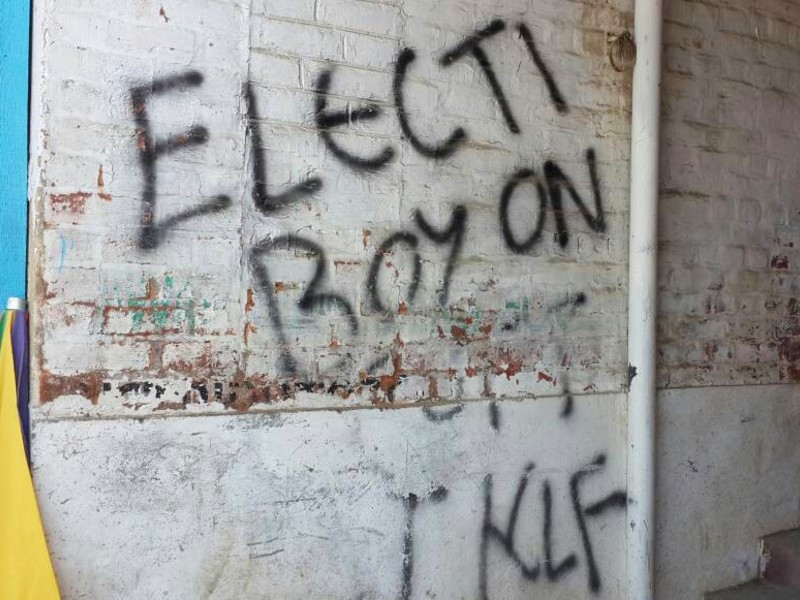
References
- Paliwal, A (8 August 2019). ‘In a 40-minute speech, PM Modi spoke of J&K 69 times’. India Today. Retrieved from https://www.indiatoday.in/india/story/in-40-minute-speech-pm-modi-spoke-of-jammu-kashmir-69-times-barely-mentioned-pakistan-1578884-2019-08-08
- Aslam, M (1977). ‘Land Reforms in Jammu and Kashmir’. Social Scientist. Vol. 6, No. 4, pp. 59-64
- Verma, P.S (1994). Jammu and Kashmir at the political crossroads. Vikas Publishing House: New Delhi
- Mehdi, A, Chaudhry, D and Tomar, P (1st Ed., 2018). ‘Freedoms, Fragility and Job Creation: Perspectives from Jammu and Kashmir, India’. Springer.
- PTI (24 June 2015). ‘Delhi sees decline in poverty rate’. The Economic TImes. Retrieved from https://economictimes.indiatimes.com/news/economy/indicators/delhi-sees-decline-in-poverty-rate/articleshow/47803536.cms
- Mathew, A (25 July 2017). ‘Child marriage increasing in Kerala, TN, Himachal and J&K’. National Herald. Retrieved from https://www.nationalheraldindia.com/national/child-marriage-increasing-in-kerala-tn-himachal-and-jandk
- Tikku, A (28 May 2016). ‘Child marriage shame: 30% Hindu, Muslim women tie knot before turning 18’. Hindustan Times. Retrieved from https://www.hindustantimes.com/india/child-marriage-shame-30-hindu-muslim-women-tie-knot-before-turning-18/story-aLH8c4fnBoEEeztIsuZZlJ.html
- Mathew, A (25 July 2017). ‘Child marriage increasing in Kerala, TN, Himachal and J&K’. National Herald. Retrieved from https://www.nationalheraldindia.com/national/child-marriage-increasing-in-kerala-tn-himachal-and-jandk
- Tiwari, S (2016). ‘Dowry Deaths’. Retrieved from https://ssrn.com/abstract=2760851 or http://dx.doi.org/10.2139/ssrn.2760851
- Dang, G, Kulkarni, V, S and Gaiha, R. ‘Why Dowry Deaths Have Risen in India?’. ASARC Working Paper 2018/03. Retrieved from https://crawford.anu.edu.au/acde/asarc/pdf/papers/2018/WP2018-03.pdf
- Ashok, S (12 February 2018). ‘Sardar Vallabhbhai Patel’s views on the Kashmir Problem: What the record says’. Indian Express. Retrieved from https://indianexpress.com/article/explained/sardar-vallabhbhai-patels-views-on-kashmir-problem-what-the-record-says-5060077/
- Noorani, A. G (12 August 2019). ‘Letters between Indira Gandhi and Sheikh Abdullah before the controversial Kashmir accord’. Scroll.in. Retrieved from https://scroll.in/article/933095/letters-between-indira-gandhi-and-sheikh-abdullah-before-the-controversial-kashmir-accord
About the Author: Sandhya Gokhale is a Mumbai based activist associated with a feminist collective – Forum Against Oppression of Women for the last 40 years and is a member of People’s Union of Civil Liberties.
All our work is available free of charge, if you wish to support our work by making a donation, so that we can continue to provide this vital service, please do so here.
This opinion article forms part of Kashmir Reading Room’s Yearly Report Aug 2019-Aug 2020. You can view the full report by clicking on the button below.
Disclaimer
The author(s) of every article and piece of content appearing within this website is/are solely responsible for the content thereof; all views, thoughts and opinions expressed in all content published on this site belong solely to the author of the article and shall not constitute or be deemed to constitute any representation by JKLPP, Kashmir Reading Room, the author’s employer, organisation, committee or other group or individual, in that the text and information presented therein are correct or sufficient to support the conclusions reached.
